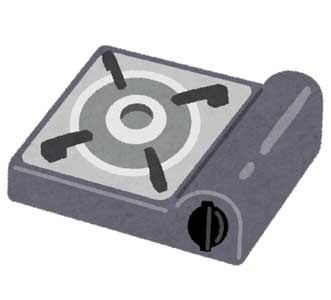2021.11.25
Heating at the push of a button is a comfort to many during the colder months. Whether it's coming home to a warm house after a walk through biting, icy winds; or slipping into a hot bath and a warm bed; or even the heated toilet seat - there are a multitude of ways that access to electricity and gas makes life more bearable through winter.
Have you ever thought about what life would be like if access to electricity and gas were disrupted because of a disaster? It's a good idea to think about what you could do to fend off the cold when that button no longer works.

A popular way to keep the hands warm outdoors is with disposable hand warmers (tsukaisute kairo / 使い捨てカイロ). Usually placed in pockets and lasting a few hours, hand warmers are an item you could stock up on to provide temporary, limited relief from the cold.

One device you could have handy is a 'cassette stove' (kasetto konro / カセットコンロ), a portable single burner which uses a gas 'cassette' (similar in size and shape to an aerosol can) as fuel. It's a good idea to have a stock of several spare gas cartridges just in case you find yourself without power for a few days. With a cassette stove you will be able to cook food as well as boil and sterilize water.
Being able to boil water will also make it possible to wash with warm water, and to make a hot water bottle to keep warm.

Hot water bottles (yutanpo / 湯たんぽ) available commercially in Japan nowadays are usually made of plastic, but metal ones are also available. These should be wrapped in a towel once filled with hot water, if they are not sold with a fabric cover to be placed in. (Prolonged contact with the skin, even if the bottle is covered, can lead to burns, so please take care when using it.)

A good substitute for a store-bought hot water bottle is a heat-resistant PET bottle. You may have seen hot coffee, tea or other beverages sold in PET bottles at convenience stores or in vending machines. Fill a PET bottle for hot beverages with hot water (between 70 and 80℃), cover it with two socks or wrap it in a towel, and you have a makeshift hot water bottle.
You can help yourself to be prepared and practice by trying to make one to warm up your bed one night; but remember not to use the cooktop installed in your home, or an electric kettle. You might think of other things you'll need to pour hot water safely, such as an old-fashioned (non-electric) kettle, or a funnel.
Reference: https://www3.nhk.or.jp/news/contents/bousai_tips/cont22.html




